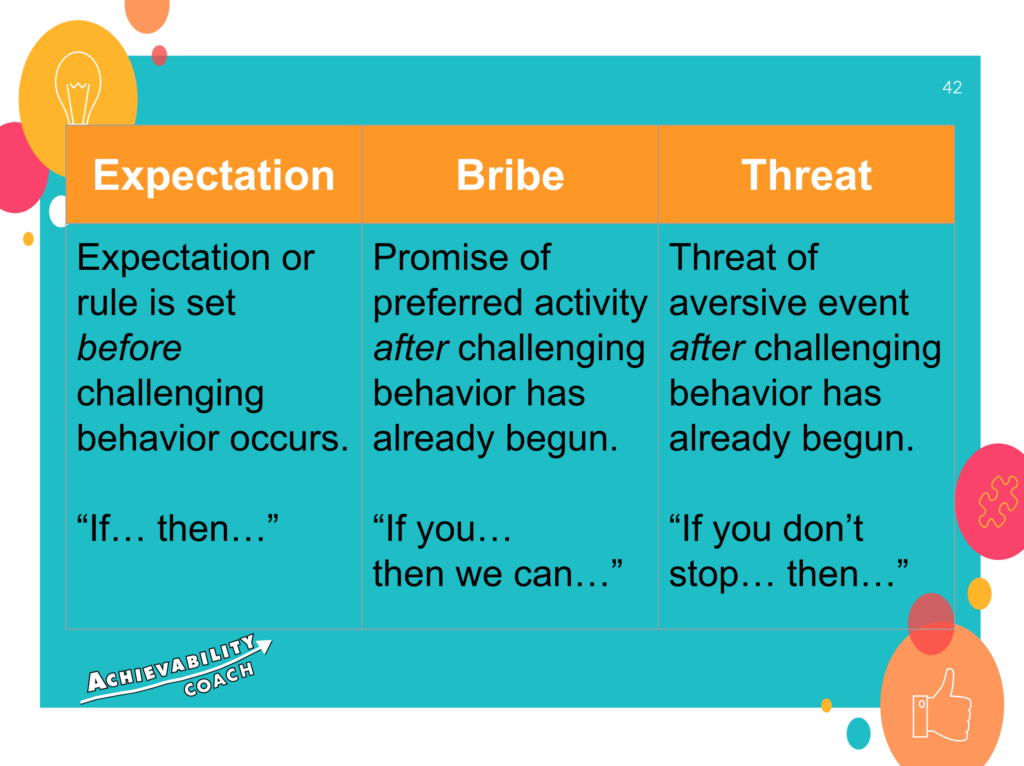
To learn what reinforcement is, check out my previous article: How To Use Reinforcement
A common question I hear is “Is reinforcement and rewarding children just bribing them?”
Let me say a big “No!” to this!
Let’s think about a few ways adults access reinforcement:
- We receive paychecks to reinforce our work
- Often companies offer bonuses or commissions for achieving specific goals
- Posting on social media often gets reinforced by “likes” and “comments”
- We may have an adult beverage after a long day
- Having a special treat after going to the gym
- Giving your significant other an extra hug after they cleaned the house
When teaching new or strengthening skills in children, we must use the principles of reinforcement if we want to see those skills. This may also mean meeting a child where they are at. Some children may only need praise or a high five for a job well done. Other children may need more tangible reinforcers at a much higher rate. So what is the difference between reinforcement, stating expectations, bribes, and threats?
Reinforcement
Reinforcement is simply a process that causes an increase in the future frequency of the behavior. You can be systematic about delivering reinforcement or let it occur naturally. Either way, reinforcement processes are always occurring around ALL of us every single day.
Setting Expectations
Many parents and teachers set rules or “expectations” for students that may include what a student will receive if they follow that expectation. Some examples include:
- “First eat your peas then we can have ice cream”
- “First complete the math work then you get 5 minutes on the iPad.”
These expectations can be set verbally, written, with visual supports, or within a schedule. This allows a child to know exactly what is expected of them, and when they can access their preferred items. This may look like:
- Every day before circle time, a teacher shows reinforcement boards/visuals and says “For every one that sits nicely, you can earn extra playtime”. Most of the class follows the expectation and earns extra playtime. 1 or 2 students do not earn the extra playtime, but see their peers that earned it. The next day, the entire class follows expectations and earns the extra playtime.
Bribes
Bribes occur if a child begins engaging in problem behavior, THEN you promise them a reward if they do something/act a certain way. Or even give some preferred thing to the child before they have done the expectation. This may also reinforce a “behavior chain” where in the future, the child will first engage in the problem behavior to access rewards. This may look like:
- A child is screaming during circle time, and someone says “If you stop screaming, I’ll give you a sucker”. The child stops screaming and gets the sucker. The very next day during circle time, the child begins screaming.
Threats
Threats occur if a child begins engaging in problem behavior, THEN you make a threat of an aversive event if they do something/act a certain way. This may also reinforce a behavior chain, especially if the “threat” is not followed through on. This may look like:
- A child is screaming during circle time, and someone says “If you don’t stop screaming, I’m going to call your mother” The child does not stop screaming and the threats continue to “If you don’t stop screaming, you’re going to lose recess”. Neither threats affect the student, and the next day, the child begins screaming.
Written by Rebecca Pikula M.Ed., BCBA
References:
Cooper, J. O., Heron, T. E., & Heward, W. L. (2007). Applied behavior analysis (2nd ed.). Columbus, OH: Merrill
Prentice Hall.
